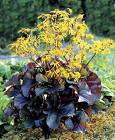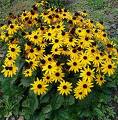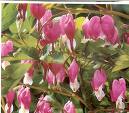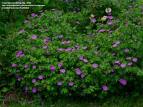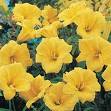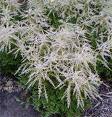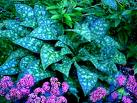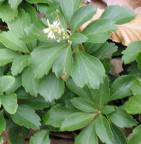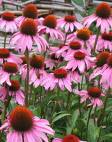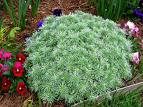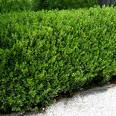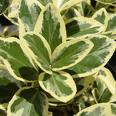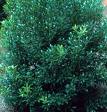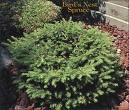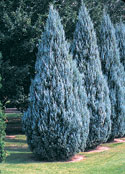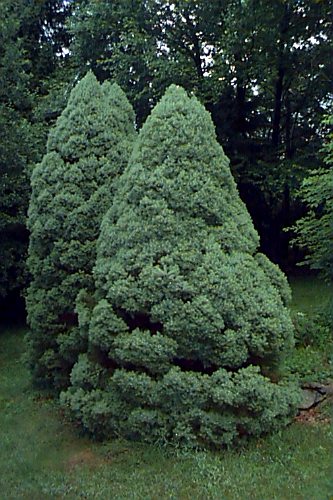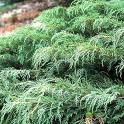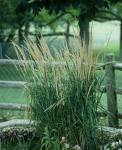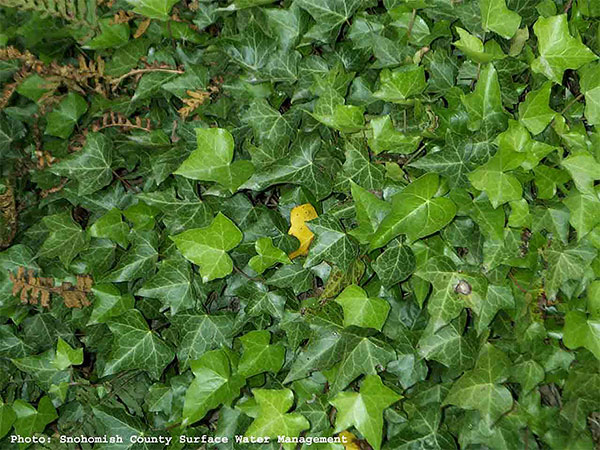Bradford Pear - Pyrus Calleryana
- Ornamental tree grown for its pyramidal, symmetrical growth habit that rapidly establishes in the landscape. Its glossy dense dark green foliage ripples in the breeze.
- Good but very late fall color, best recognized for its white dense showy flowers in the spring.
- Prune in winter or early spring.
|
 |
Butterfly Bush - Buddlea Davidii
- Profuse summer-flowering shrub whose fragrant flowers attract many butterflies and hummingbirds.
- Prune annually removing the dead wood.
|
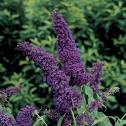 |
Cotoneaster - Cotoneaster Apiculata
- Low shrub or tall woody groundcover noted for its arching branches and spreading habit, small glossy foliage, and red fruits.
- Mulch thoroughly underneath shrub to prevent weeds from arising from beneath.
|
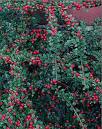 |
Crimson Pygmy Barberry - Berberis Thunbergii Atropurpurea
- Spiny small shrub, of very fine texture and very urban tolerant, with a wide selection of foliage color varieties.
- Tolerant of shearing.
|
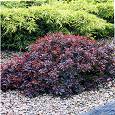 |
Dwarf Burning Bush - Euonymus Alatus Compactus
- Compact growing deciduous shrub with brilliant red foliage in fall.
- Tolerates shearing and responds well to rejuvenation pruning in early spring.
|
 |
Flowering Crabapple - Malus
- Spectacular spring floral display, various growth habits and sizes, and autumn/winter fruit.
- Best pruned from autumn to early spring before active growth begins.
|
 |
Forsythia
- Deciduous shrub with an abundance of golden-yellow flowers in early spring.
- Tolerates heavy pruning.
|
 |
Golden Vicary Privet - Ligustrum
- Hedge or specimen shrub with brilliant gold deciduous foliag.
- Amenable to shearing.
|
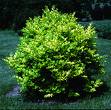 |
Honeylocust - Gleditsia Triacanthos Inermis
- An urban-tolerant tree, excellent for its filtered summer shade and majestic winter silhouette coupled with its bold texture.
- Prune after fully leafed out.
|
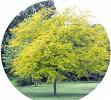 |
Hydrangea - Hydrangea Macrophylla
- Rounded shrub with huge leaves and ball shaped flowers.
- Prune as soon as the flowers have faded.
|
 |
Japanese Bloodgood Maple - Acer Palmatum
- Focal point, specimen, foundation, entranceway, or raised planter small tree with beautiful red foliage.
- Prune Japanese maples in late fall or winter, while they are dormant, removing any dead or damaged branches. They adapt well to pruning and are easily thinned and sculpted to accentuate their graceful shape.
- You may prune further to control the size, or create a shape to suit your landscape needs.
|
 |
Kousa Dogwood - Cornus Kousa
- Multi-season small tree, noted for its early summer long-lasting flowers, autumn fruits, good summer foliage and occasional fall color.
- May be pruned in early spring, but keep pruning to a minimum as wounds heal slowly.
|
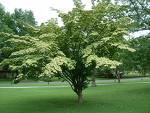 |
Lilac - Syringa Vulgaris
- A medium to large hardy shrub with stout, spreading branches developing a somewhat oval to irregularly rounded crown.
- Showy, fragrant flowers.
- Prune after flowering.
|
 |
Ninebark - Physocarpus Opulifolius
- Deciduous shrub with white spring flowers, red fruits and exfoliating bark. Cultivars are available with foliage ranging from dark purple to red to gold.
- Prune to shape in late spring or early summer, after it flowers. Ninebark is known for its peeling bark, and this trait is most noticeable on the oldest stems.
|
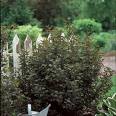 |
Norway Maple - Acer Platanoides
- Norway maple is a deciduous tree that grows 40-60 feet tall.
- Prune to remove dead, dying and diseased limbs.
|
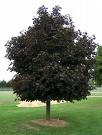 |
Paper Birch - Betula Papyrifera
- Medium-sized deciduous tree. White bark, flaking in fine horizontal strips, and often with small black marks and scars.
- Do not prune during the growing season and especially not in spring as this is when the Bronze Birch Borer is active.
|
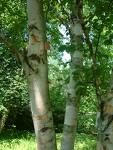 |
Pin Oak - Quercus Palustris
- Symmetrical shade tree that can tolerate dry or wet sites, with characteristic downswept lower branches and ascending upper branches.
- Prune in winter or early spring.
|
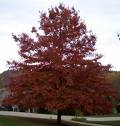 |
Potentilla - Potentilla Fruticosa
- Deciduous shrub that does best in full sun and will flower all summer if trimmed in late June or July.
- Prune after flowering to keep plant shaped, neat and compact.
|
 |
Purpleleaf Sandcherry - Prunus Cistena
- Deciduous shrub with purple foliage and pinkish-white flowers in May.
- Prune hard after flowering.
|
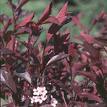 |
Rose of Sharon - Hibiscus Syriacus
- A shrub with large showy flowers (in single or double flowering form, with solid colors or bi-colors) that blooms all summer long and has a distinctive vase-shaped growth habit.
- Prune in late winter or early spring.
|
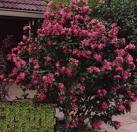 |
Serviceberry - Amelanchier
- Four-season plant of great ornamental value for spring flowers, summer fruits and autumn fall foliage color.
- Train and prune the trunks and branches so they will not touch each other.
|
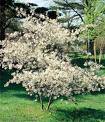 |
Spirea - Spiraea Japonica
- Compact small shrub that has multi-season appeal.
- Trim lightly after flowering for rebloom. Shape in summer or fall if needed.
|
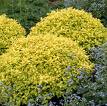 |
Star Magnolia - Magnolia Stellata
- Upright large shrub or small tree with layered branches that create a mounding effect with age.
- White showy spring flowers. Bracts that emerge before the foliage.
- Prune after blooming.
|
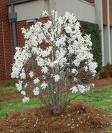 |
Sweetspire - Itea
- Tough shrub with fragrant white mid-summer inflorescences that have a narrow bottlebrush appearance.
- Tolerates both sun and shade.
- Prune to maintain desired form for summer flowering. Flowers on old wood.
- Cut back alternate branches to avoid a year with no blooms.
|
 |
Weigela
- Small deciduous shrub that grows best in a sunny location with moist soil. The flowers are long and are trumpet-shaped.
- Prune after flowering.
|
 |
Variegated Redtwig Dogwood - Cornus Alba
- Colorful decidous shrub with green & white foliage and red stems. Great winter interest with red twigs
- Performs best when regularly thinned.
|
 |
Viburnum - Viburnum Tomentosum
- Deciduous shrub with elegant beauty, flowering in late spring early summer.
- Some varieties known for their intense fragrance.
|
 |
Virginia summersweet - Clethra
- Summer-flowering shrub that readily naturalizes in the border or makes a good foundation shrub and is excellent for wet sites in partial shade.
- Prune in early spring, as flowering occurs on new wood.
|
 |
Weeping Cherry - Prunus 'Snowfountain'
- A slow-growing ornamental tree, the branches of the weeping cherry cascade right down to the ground.
- Continue to prune as the tree grows. Remove any water sprouts or suckers.
|
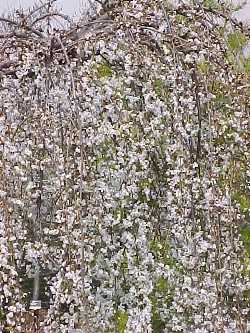 |
Weeping Mulberry - Moris Alba 'Pendula'
- The mulberry develops an extremely dense, round-topped crown prune branch.
- Prune your mulberry tree to shape it as it gets bigger.
|
 |
